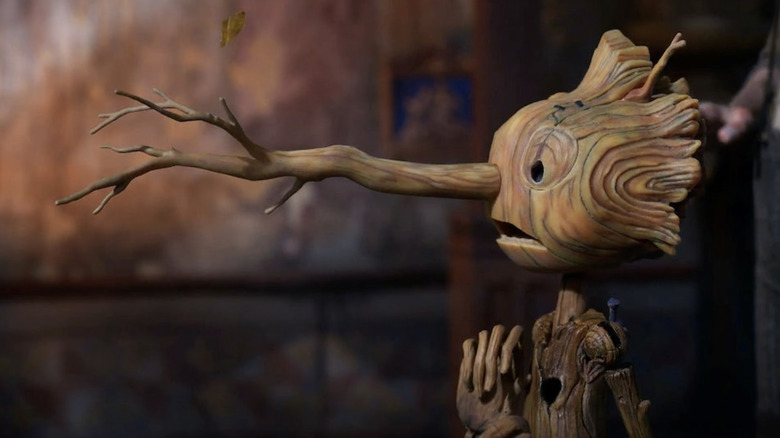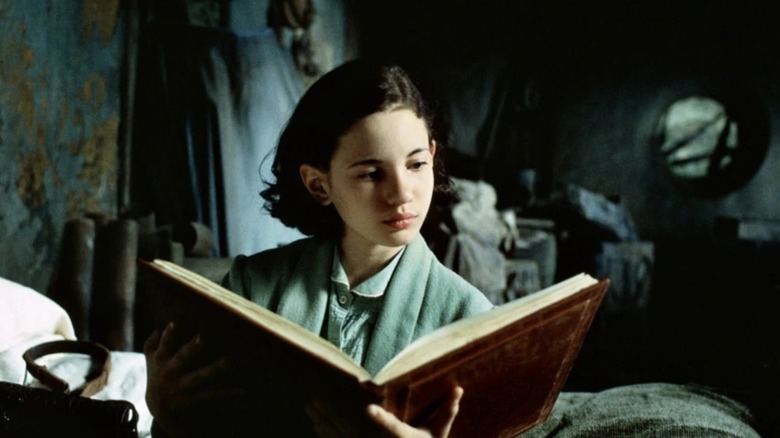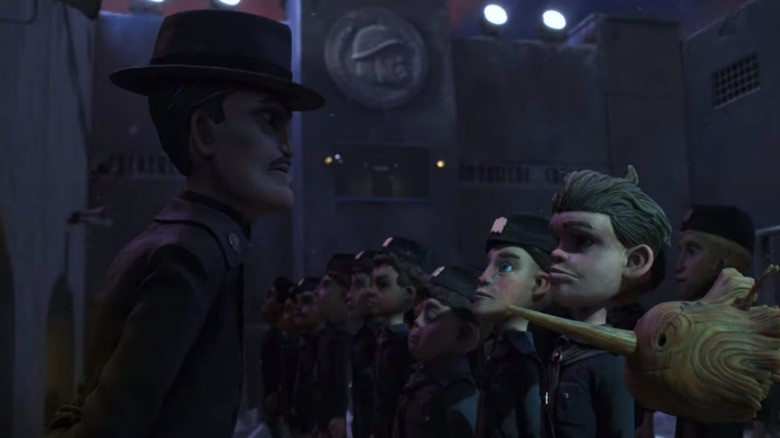How Pan's Labyrinth's Central Character Arc Helped Guillermo Del Toro Build Pinocchio's Journey
Most are introduced to the tale of Pinocchio by Walt Disney. The wooden boy with a nose that grows was the star of Disney's second produced picture, arriving in 1940 on the heels of 1937's "Snow White and the Seven Dwarfs." While Disney is an essential piece to Pinocchio's legend, the story does not begin or end with them.
Guillermo del Toro, one of those young boys who first met Pinocchio via the Disney film, released his own version of the story last year. Speaking to The Wrap, del Toro revealed his evolving reaction to Disney's "Pinocchio":
"I saw [Disney's] 'Pinocchio' as a very young kid, and I loved it because I found it captured how scary childhood felt to me. But I didn't quite understand why he needed to be an obedient boy to be loved. And then in my 20s, I started thinking that it would be great to set him against a totalitarian government."
Now that he had an idea, del Toro needed the structure. When he finally got to make his "Pinocchio" in 2022 and was plotting out the lead's character arc, he looked to his previous film, "Pan's Labyrinth."
Tests of disobedience
I've written before about the similarities between del Toro's Spanish-language works and "Pinocchio." While "Pan's Labyrinth" is set in Francisco Franco's Spain, "Pinocchio" takes place when Italy was ruled by Benito Mussolini. Both films are about how children live under totalitarian regimes, and while adults around them kowtow to authority, the children resist having their wills stamped out.
Ofelia (Ivana Baquero), the lead of "Pan's Labyrinth," prefers fairy tales to reality. She meets a Faun (Doug Jones) who offers her a trip to the Underworld if she completes three tasks. As del Toro explained to The Wrap, "Tests that were not physical tests, but they changed her and measured her soul."
In each of Ofelia's tests, she disobeys. In the first test, she ventures into a cavernous tree despite her mother's warning to stay clean. In the second, she eats some food from the table of the Pale Man despite warnings not to then is nearly killed for it — disobedience doesn't come without danger. Then in the final test, she refuses to give her infant brother to the Faun so he may take "the blood of an innocent." This selfless disobedience is what enables her to go to the Underworld.
Reimagining Pleasure Island
Like Ofelia, Pinocchio faces three challenges that test his character. In the Disney film, the second test comes from Pleasure Island. The demonic Coachman whisks Pinocchio and other "stupid little boys" away to a carnival where they're free to misbehave to their hearts' content. For a while at least; as the boys make jackasses of themselves, they literally turn into donkeys that the Coachman sells off. Pinocchio is the only one who escapes this fate. What's the lesson he learns? Be a good boy, or else.
Disney was a rather conservative artist, so promoting such a message certainly tracks. It's with this lesson, however, that del Toro takes umbrage with the film.
That's why del Toro's "Pinocchio" flips the second challenge on its head. The Pleasure Island analog is a fascist re-education camp run by one Podestà (Ron Perlman). The camp strips the boys of their identities like Pleasure Island did, but it does so by drilling obedience into their heads. Pinocchio and Podestà's son, Candlewick (Finn Wolfhard) are only saved when they stand up to their captor.
Asked about his political views 15 years ago, del Toro answered, "I hate structure. I'm completely anti-structural in terms of believing in institutions. I hate them. I hate any institutionalized social, religious, or economical thing." That's why his films, from "Pan's Labyrinth" to "Pinocchio," are some of the few that teach children the importance of saying "no" to authority.


